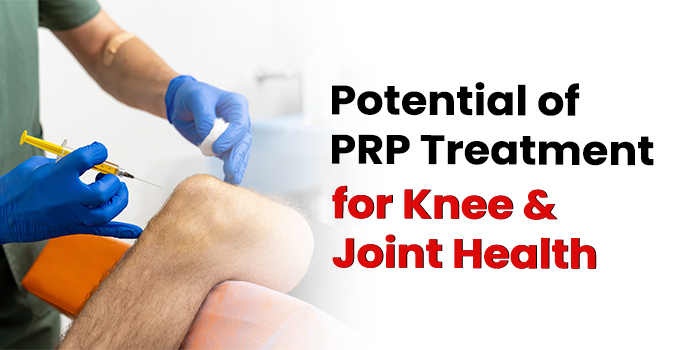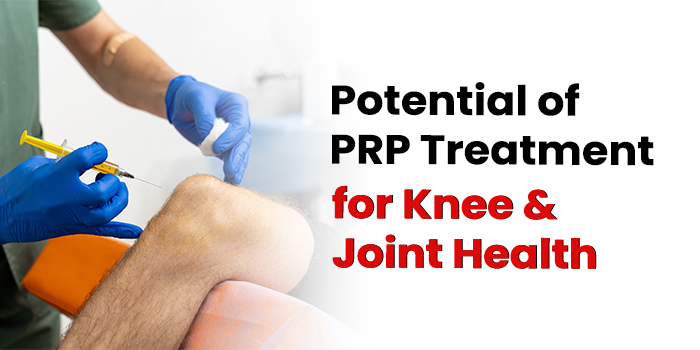
The Potential of PRP Treatment for Knee & Joint Health

Potential of PRP Treatment for Knee & Joint Health
In the ever-evolving landscape of medical advancements, Platelet-Rich Plasma (PRP) injections have emerged as a groundbreaking approach to addressing various musculoskeletal conditions. Initially integrated into surgical settings for cell regeneration as early as 1987, the spotlight has recently shifted towards uncovering the therapeutic potential of PRP in managing tendinosis and osteoarthritis. This comprehensive exploration delves into the current state of research surrounding PRP therapy, shedding light on its capacity to foster joint healing and enhance overall joint health.
The Unfolding Narrative of PRP Research
The narrative of PRP within the medical realm is marked by a continuous evolution of research and discussions. While initially celebrated for its regenerative capabilities in surgical scenarios, the exploration of its application in osteoarthritis treatment has gained considerable momentum more recently. A substantial portion of research articles on this subject has emerged since 2010, offering a nuanced perspective on the promising potential of PRP in managing joint-related issues.
Unraveling the Dynamics of PRP in Knee Osteoarthritis Studies
Research endeavors frequently concentrate on knee osteoarthritis, a prevalent condition that significantly impacts the daily lives of many individuals. A noteworthy study published in 2013 involving 78 patients with osteoarthritis in both knees (156 knees in total) showcased compelling results. Those who received PRP injections—whether one or two—experienced a notable reduction in pain and stiffness, coupled with improved knee function at various evaluation points. While positive outcomes diminished after six months, they remained superior to the baseline, distinguishing them from the placebo group.
Another noteworthy study focused on patients with mild knee pain, revealing that PRP injections led to reduced pain levels after one year. Although knee cartilage regeneration was not prominent, the preservation of joint health without an exacerbation of arthritis is a crucial finding, especially considering the typical annual cartilage loss in arthritic joints.
Navigating Divergent Perspectives on PRP
Despite encouraging outcomes, not all clinical studies unequivocally endorse PRP as a definitive treatment for osteoarthritis. Some studies posit that PRP injections may not yield more significant results than placebos, emphasizing the variability in individual responses to PRP therapy. Advocates contend that disparities in PRP formulation and administration may contribute to these variations. Conversely, skeptics propose that PRP therapy might be a transient trend with limited enduring value
Deconstructing Platelet-Rich Plasma
At its core, PRP is a solution teeming with a heightened concentration of platelets compared to regular blood. Renowned for their clotting prowess, platelets also house growth factors pivotal for the body’s natural healing processes. The intricate process involves extracting a blood sample, utilizing a centrifuge to separate platelets and plasma, and subsequently injecting the resulting PRP into the targeted area.
The All-Encompassing Versatility of PRP Treatment
PRP injections extend their reach to diverse conditions, ranging from musculoskeletal pain and injuries to aesthetic procedures. Chronic tendon injuries, post-surgical healing, and osteoarthritis constitute realms where PRP has exhibited promising results. Its capacity to catalyze the healing process, diminish pain, and expedite recovery positions it as a versatile option within the realm of regenerative medicine.
Risk Mitigation: Understanding PRP Therapy
While categorized as a low-risk procedure, it’s imperative to acknowledge the potential side effects associated with PRP injections. Soreness, bruising, and, in rare instances, bleeding, tissue damage, infection, or nerve injuries may occur. Notably, the utilization of a patient’s own cells significantly diminishes the risk of allergic reactions in comparison to other injectable medications.
Conclusion
In the ever-evolving landscape of joint health treatments, Platelet-Rich Plasma injections emerge as a beacon of promise for conditions like osteoarthritis. The ongoing research, while not uniformly conclusive, paints a canvas of potential benefits, particularly in alleviating pain and enhancing joint function. As studies delve deeper into the nuances of PRP therapy, its integral role in holistic joint care becomes increasingly evident.
For individuals contemplating PRP injections, a meticulous assessment of the benefits against potential risks, in consultation with healthcare providers, is paramount. The SAAOL Ortho Care PRP Injections, aligning seamlessly with the evolving field of regenerative medicine, represent a hopeful avenue for those seeking non-invasive alternatives to elevate joint health and alleviate the challenges posed by musculoskeletal conditions. Looking ahead, PRP injections stand poised to revolutionize the paradigm of joint health, offering a potential breakthrough in the pursuit of a pain-free and active lifestyle.
- No Comments
- January 16, 2024
